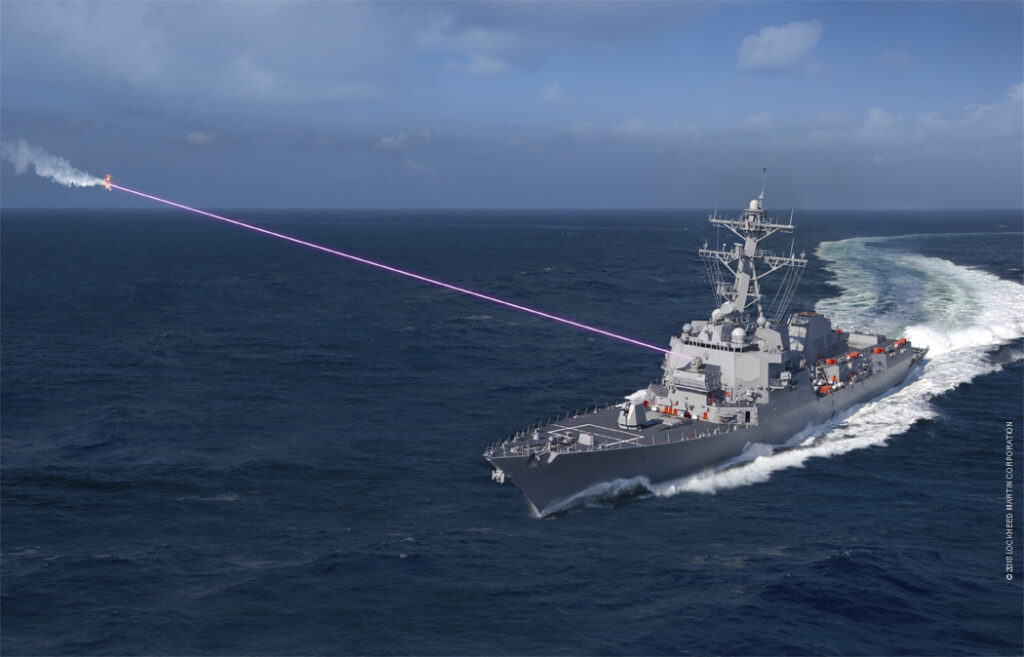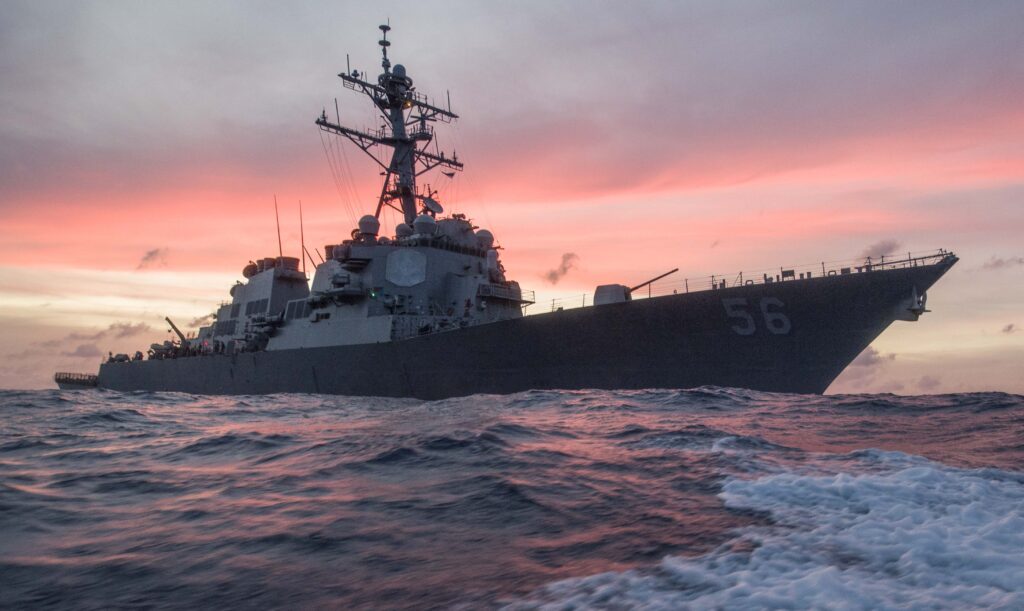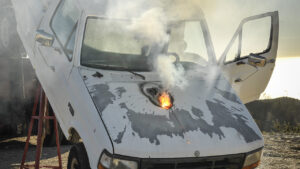First Combat Laser For Navy Warship: Lockheed HELIOS
Posted on

Lockheed Martin concept for their new HELIOS laser for the Navy.
WASHINGTON: By 2020, for the first time, the US Navy will put a lethal laser on a warship.
“This is a very big deal,” said Mark Gunzinger of the Center for Strategic & Budgetary Assessments, a longtime advocate of lasers. “It is clear evidence of the progress that has been made over the last several years on maturing solid state lasers. We are talking about lasers that now have the power and beam quality needed to defend against UAVs (Unmanned Aerial Vehicles), small boat threats, and possibly some weapons (e.g. incoming missiles) over short ranges.”
“It also highlights how serious the Navy is about fielding non-kinetic defenses with deep ‘electric’ magazines,” Gunzinger said. Unlike guns and missiles, a laser doesn’t run out of ammunition as long as it has electrical power.
While contractor Lockheed Martin wouldn’t disclose specifics, the HELIOS laser puts out somewhere between 60 and 150 kilowatts. That means it’s at least twice as powerful — possibly five times — as the 30-kW LAWS laser demonstrator deployed in 2014 to the Persian Gulf. LAWS was able to shoot down drones and disable small boats, and temporarily blind (or “dazzle”) sensors, as well as use its targeting optics as a kind of super-telescope.
“I’ve been working on lasers for decades,” Lockheed senior scientist Rob Afzal told reporters told reporters. “To me, the HELIOS contract is really a watershed moment….We’re crossing out of science and technology and building real capability for the Navy.”
Another big difference with HELIOS is that LAWS was installed somewhat ad hoc on the support ship USS Ponce. HELIOS will go on the mainstay of the battle fleet, an Arleigh Burke-class destroyer, and it will be fully integrated into the ship’s Aegis combat system, Afzal said.
Electrical power for the laser may pose a problem on Navy ships like the Arleigh Burkes, which weren’t designed with a lot of kilowatts to spare. Newer designs like the DDG-1000 Zumwalt destroyer and the CVN-78 Ford aircraft carrier are built with a comfortable margin to accommodate electricity-hungry equipment — lasers, railguns, sensors, and more — but backfitting such systems onto older ships is tricky.

The USS McCain (DDG 56)
So how can an Arleigh Burke destroyer accommodate HELIOS? That’s up to the Navy, which isn’t talking yet. Under the $150 million contract’s, Lockheed’s job is
- To deliver two lasers — one for testing ashore and one for installation on a destroyer — and;
- To modify the software on the Aegis combat system, another Lockheed product, so it can use the laser both as a weapon and a sensor.
For its part, the Navy will provide power, cooling — a major issue since lasers run hot — and the interface to control the laser.
The contract includes $942 million in options which would allow the Navy to buy additional lasers as well as Lockheed’s services in installing the laser, maintaining them and training the crews. But if the Navy likes the laser enough to make it standard issue, there are 64 Arleigh Burkes in service.

A target truck disabled by Lockheed’s ATHENA laser
Or the HELIOS laser could end up being a one-off experiment like the LAWS, though the provision of the options seems to indicate the Navy is committed. Just how useful it will be depends on several key factors that the Navy and Lockheed aren’t discussing, notes retired Navy captain Jerry Hendrix, now with the Center for a New American Security. How long the laser beam can be sustained before it cuts out? How quickly does its energy dissipate at longer ranges or in rain? What frequencies will it use? And what is its power level, precisely?
The 60-150 kW range is from the original Navy solicitation for what became HELIOS. It’s likely HELIOS is in the upper half of that range, since in previous years, admirals working on LAWS had said they wanted at least 100 to 150 kW out of its successor. Afzal had also told me in 2015 that Lockheed’s 60 kW laser for the Army could easily scale up to 100 kW, so we know Lockheed is confident it can build something in that range.

Rob Afzal
That power level is useful against drones, small boats, and some incoming weapons — setting off a attacker’s explosives before he fires them is a particularly attractive option the Navy’s discussed. But it’s not enough for missile defense against military-grade anti-ship weapons.
In fact, the acronym HELIOS, while contrived, helpfully lays out the laser’s functions:
- HEL = High Energy Laser, the destructive part of the system;
- IO = Integrated Optical-dazzler, the ability of the laser at lower power settings to temporarily blind enemy sensors;
- S = Surveillance — lasers require extremely precise optics so they can concentrate their beam at a single point on the target and burn through. The crew of the Ponce discovered that when LAWS wasn’t zapping things, which was most of the time, its optics make a great surveillance tool, like a high-tech telescope.
HELIOS builds on earlier lasers with equally contrived acronyms, ATHENA and ALADIN, that Lockheed built at its own expense to develop the technology. It’s also very similar to the 60-kilowatt laser Lockheed delivered last year to the Army’s laser program. It will be mounted will on a HEMTT heavy truck for tests. Only the Navy is putting a laser on an operational combat platform for real world missions.
Subscribe to our newsletter
Promotions, new products and sales. Directly to your inbox.
